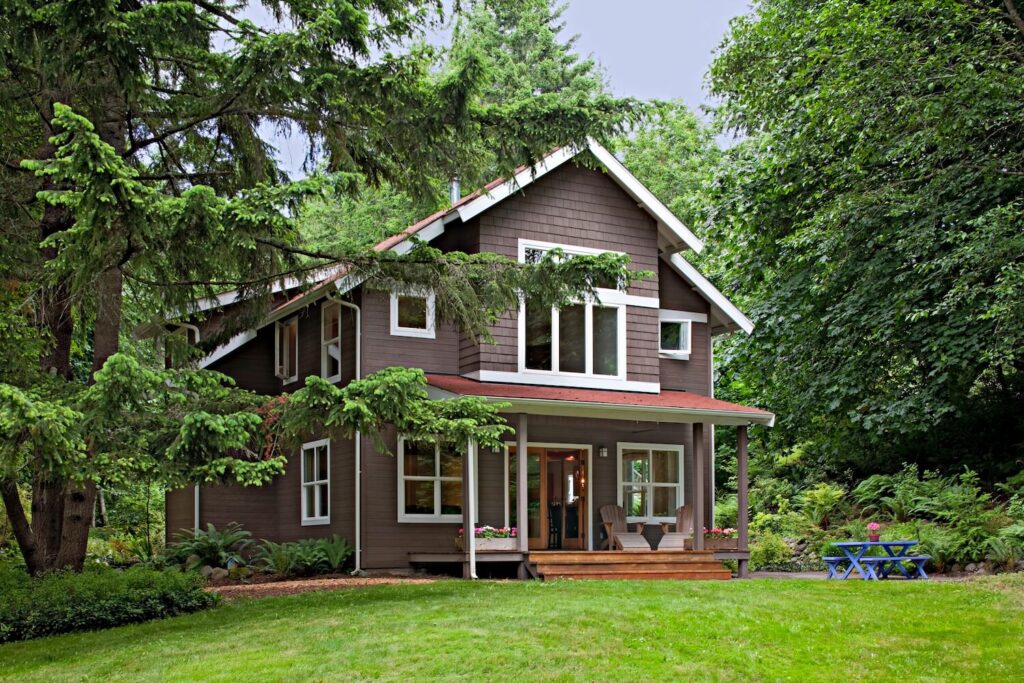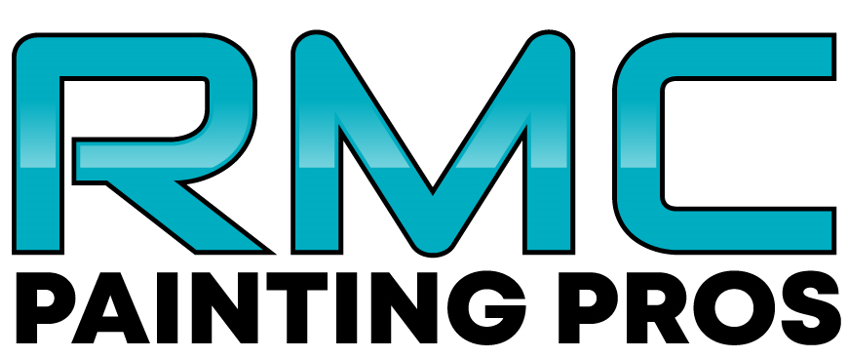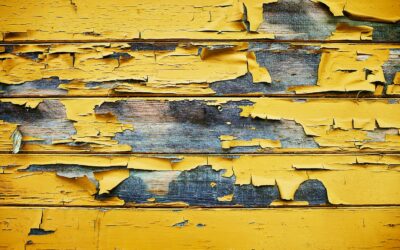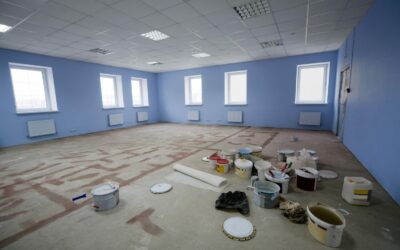
When you envision improving your home’s appearance, one of the most significant transformations comes from a fresh coat of exterior paint. It can instantly enhance curb appeal, refresh the overall aesthetic, and even protect your home from weather damage. Faced with the decision of painting your home, many homeowners ask themselves: should I tackle this project on my own, or is it worth hiring a professional exterior painting contractor?
While DIY projects may seem appealing in terms of potential cost savings and personal satisfaction, exterior painting presents a unique set of challenges that often make hiring a professional the smarter choice.
This article will delve into the pros and cons of both painting approaches and highlight why a professional touch offers superior results, better safety, and long-lasting value.
1. Assessing the Complexity of Exterior Painting
Before making a decision, it’s important to understand the scope and complexity of an exterior painting project. It’s not just a matter of grabbing a roller and some paint—there’s a lot of preparation, technique, and physical labor involved that can make the difference between a high-quality finish and a job that needs redoing within a year.
Size of the Project
The size of your home greatly impacts whether a DIY approach is feasible. Painting the exterior of a multi-story house requires the use of ladders, scaffolding, or boom lifts to access high areas. Painting large surfaces uniformly requires skill, patience, and the right equipment. What might seem like a manageable project for a small shed or garage quickly becomes overwhelming when you take on a whole house.
Different Surfaces, Different Techniques
Homes are constructed with a variety of materials such as wood, stucco, brick, or vinyl siding, each requiring a specific painting method for optimal results. For example:
- Stucco: This surface requires thick, even coats of paint, often applied with a sprayer for smooth coverage.
- Wood siding: Paint needs to be applied carefully, as wood is more vulnerable to moisture, and inadequate preparation can lead to peeling and warping.
- Brick: Painting brick requires special care to prevent moisture from getting trapped and damaging the structure.
A professional painter knows how to handle these different materials and can adjust their approach to suit your home’s specific needs.
Preparation Requirements
A good paint job starts with proper preparation. This is often the most overlooked and tedious part of the process for DIYers. However, skipping or skimping on prep work can ruin the entire project. A professional painter will:
- Pressure wash the exterior to remove dirt, mildew, and debris that can prevent paint from adhering.
- Repair damaged surfaces, such as cracked or rotting wood, to ensure the paint applies smoothly and evenly.
- Sand down rough or peeling areas to create a smooth surface.
- Prime the exterior to create a strong base that seals the surface and enhances the paint’s durability.
Skipping these steps or doing them incorrectly will result in a paint job that doesn’t last, which leads to frustration, wasted time, and the need to repaint much sooner than anticipated.
2. Cost Considerations: A Closer Look at DIY vs. Professional
When homeowners consider DIY, the allure is often driven by cost savings. However, it’s crucial to weigh not only the upfront costs but also the long-term value of the job. Let’s break down the expenses for both options.
DIY Costs
At first glance, the DIY route might appear to be more cost-effective, but it’s easy to overlook several factors:
- Tools and Equipment: Exterior painting requires more than just brushes and rollers. You’ll need ladders, drop cloths, scaffolding (for multi-story homes), a pressure washer, scrapers, sanding tools, caulk, and safety gear. Many homeowners don’t already have these tools and will need to rent or purchase them, which adds significantly to the overall cost.
- Paint and Supplies: Using cheap paint might save money in the short term, but it will likely require more coats, wear out faster, and not provide adequate protection for your home. A professional-grade exterior paint will cost more upfront but last longer, saving you from having to repaint within a few years.
- Hidden Costs: DIY often comes with unexpected costs such as fixing mistakes, dealing with subpar finishes, or even addressing damage from improper prep work. In the long run, these costs can negate any savings from doing the job yourself.
Professional Costs
Hiring a professional exterior painting contractor does come with a higher upfront cost, but that investment pays off in several key ways:
- Time Savings: A professional team can finish the job in a fraction of the time it would take a homeowner. Instead of spending your weekends on ladders, you’ll have time for other priorities.
- High-Quality Materials: Contractors have access to better-quality paints and tools that are not always available to the public, ensuring a longer-lasting finish.
- Warranty: Many professional painters offer warranties, giving you peace of mind that your investment is protected. If something goes wrong, they will fix it at no additional cost.
Value for Money
The old saying “you get what you pay for” rings true in exterior painting. A professional job will last longer, offer better protection for your home, and significantly boost curb appeal. The longer-lasting results of a professional paint job mean fewer touch-ups and repainting, ultimately saving you money in the long term.
3. The Importance of Quality: A Professional Finish vs. DIY Efforts
The difference in quality between a DIY exterior paint job and one completed by professionals is stark. From even paint application to the fine details of edging and trim work, professionals bring a level of craftsmanship that’s hard to replicate.
Consistency and Expertise
Achieving an even coat on the exterior of your home requires patience and skill. Professionals use the best tools for the job, whether it’s high-quality brushes and rollers for detailed work or spray guns for large, flat surfaces. They know how to apply the paint evenly, ensuring no streaks, runs, or drips that can diminish the aesthetic appeal.
Proper Use of Paint Types
Not all paints are created equal, and professionals know which types of paint are best for different materials and weather conditions. They also understand the importance of primers and sealants, which enhance the durability of the paint. Using the wrong type of paint can lead to premature wear and tear, requiring you to repaint much sooner than necessary.
Attention to Detail
A professional painting contractor pays attention to every aspect of the job. From clean lines on the edges of trim and window sills to smooth finishes on textured surfaces, the details matter. Poorly done edging or uneven coats can detract from your home’s appearance, and professionals take the time to ensure these finer points are perfect.
Durability and Longevity
A professional paint job is designed to withstand the elements. Whether your home faces extreme heat, rain, snow, or wind, the quality of the paint and the expert application ensure your home is protected for years. A poorly applied DIY paint job, by contrast, might fade, peel, or crack within a few seasons, leading to more frequent repainting and more costs over time.
4. Safety Concerns: Why Professionals Have an Edge
One of the most significant reasons to hire a professional exterior painting contractor is safety. Painting a single-story home is one thing, but multi-story homes require navigating ladders, scaffolding, or boom lifts, which can be dangerous without the right experience and equipment.
Working at Heights
Falls from ladders are one of the most common causes of injury for DIYers. Painting the upper levels of a house, especially around windows and roofs, requires maneuvering heavy equipment while maintaining balance. Professionals are trained to work safely at heights and have the necessary safety gear to protect themselves and others.
Dealing with Lead Paint
If your home was built before 1978, there’s a chance that lead-based paint was used in its construction. Sanding or scraping old paint without proper precautions can release harmful lead dust into the air. Professional painters are trained in lead-safe practices and know how to handle these situations to protect your health and the environment.
Avoiding Accidents
Even on single-story homes, there are risks associated with exterior painting, including trips, falls, and spills. Professionals have the experience to minimize these risks, ensuring a smooth and safe project.
5. Efficiency and Time Management: Pros Save You More Than Just Money
When you attempt a DIY exterior painting project, the time commitment can quickly add up. What you envision as a weekend project can easily turn into weeks of effort as you deal with unexpected challenges, weather delays, and life interruptions.
Time Efficiency
Professional painters have the skills and team to complete the job efficiently. They can tackle all aspects of the project—from prep work to the final coat—in a fraction of the time it would take the average homeowner. This is especially important if you’re under a deadline, such as preparing your home for sale or wanting it finished before a big event.
Weather Management
Exterior painting is highly dependent on weather conditions. Painting in too much heat, cold, or humidity can impact how well the paint adheres and dries. Professionals monitor the weather carefully and know when to paint and when to delay to ensure the best results.
Minimizing Disruptions
Home improvement projects can be disruptive, especially if they drag on for longer than expected. Hiring a professional ensures that the work is done quickly and with minimal disruption to your daily life. You won’t have to live in a construction zone for weeks on end, and you’ll be able to enjoy the finished product sooner.
Conclusion: Professional Expertise Makes a Lasting Difference
While DIY projects can be rewarding, when it comes to exterior painting, the complexities, time investment, and potential hazards make hiring a professional the better option for most homeowners. A professional exterior painting contractor brings expertise, safety, efficiency, and a high-quality finish that will last for years, ultimately saving you time, money, and frustration.
So, before you pick up that paintbrush, consider the long-term benefits of bringing in the pros. With their skill and experience, you can enjoy a beautifully painted home that enhances curb appeal, adds value, and protects your investment for years to come.
Read Other Blog Posts
5 Signs It’s Time to Repaint Your Home: Don’t Ignore These Red Flags
Your home is more than just a...
Choosing Affordable Expert Paint Services That Don’t Compromise Quality
The quest for affordable yet...
Reasons Why Professional Painting Services are Vital for Commercial Properties
The façade of a commercial...
The Dos and Don’ts of Choosing Paint Colors for Your Home
Selecting paint colors for...
House Budgeting Brilliance: A Guide to Estimating Interior Painting Costs
Painting your home's interior...
The Painters Color Clock: How Often Should You Get Your Walls Painted?
The walls of our homes serve...






